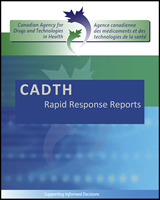Orthopedic disorders encompass a variety of conditions including rotator cuff tendinopathy (shoulder disorder), epicondylitis (elbow disorder), patellar tendinosis (knee disorder) and plantar fasciitis (foot disorder) and are often associated with pain. Disorders such as these may be associated with decreased productivity or disability that may last several months resulting in a financial burden to society. Conventional therapies used in general practice to manage pain include rest, ice, nonsteroidal anti-inflammatory drugs, physical therapy, and subacromial corticosteroid injections. , Patients unresponsive to such therapies may need to undergo surgical procedures. Shockwave therapy (SWT) may be an alternative to surgical procedures which can be expensive and associated with risk. Other therapeutic modalities include laser therapy, radiation therapy, and transcutaneous electric nerve stimulation (TENS).
SWT involves acoustic waves which carry energy to painful spots and musculoskeletal tissues with subacute, subchronic and chronic conditions. This energy assists in regeneration and repair of bones, tendons and other soft tissues. The exact mechanism of action is not clear. The interaction of shockwaves with tissue is thought to cause stimulation of tissue healing, breakdown of calcification, alteration of cell membrane permeability, and alteration of cell activity through cavitation. , Devices used for SWT vary in design, depending on the way shockwaves are generated and the level of energy that it can produce. Generally, the shockwaves are generated by electrohydraulic, electromagnetic or piezoelectric mechanisms. SWT includes focused shockwave therapy (FSWT) and radial shockwave therapy (RSWT). FSWT is based on shockwaves of single pressure pulses of a microsecond duration, which are focused on a specific target using ultrasound or radiography guidance. RSWT is a low- to medium- energy shockwave that is pneumatically generated through the acceleration of a projectile inside the hand-piece of the medical device and then transmitted radially from the tip of the applicator to the target area.
SWT has been used for over two decades for the treatment soft tissue and bone related musculoskeletal disorders. There is however some debate regarding the effectiveness of SWT compared to placebo or other treatment modalities.
The purpose of this report is to review the clinical effectiveness and cost-effectiveness of shockwave therapy for pain associated with upper extremity orthopedic disorders. A separate report will review the clinical effectiveness and cost-effectiveness of shockwave therapy for pain associated with lower extremity orthopedic disorders.
Disclaimer: The Rapid Response Service is an information service for those involved in planning and providing health care in Canada. Rapid responses are based on a limited literature search and are not comprehensive, systematic reviews. The intent is to provide a list of sources of the best evidence on the topic that CADTH could identify using all reasonable efforts within the time allowed. Rapid responses should be considered along with other types of information and health care considerations. The information included in this response is not intended to replace professional medical advice, nor should it be construed as a recommendation for or against the use of a particular health technology. Readers are also cautioned that a lack of good quality evidence does not necessarily mean a lack of effectiveness particularly in the case of new and emerging health technologies, for which little information can be found, but which may in future prove to be effective. While CADTH has taken care in the preparation of the report to ensure that its contents are accurate, complete and up to date, CADTH does not make any guarantee to that effect. CADTH is not liable for any loss or damages resulting from use of the information in the report.

